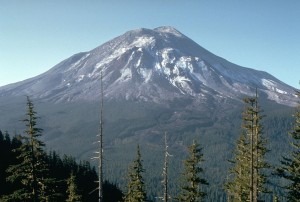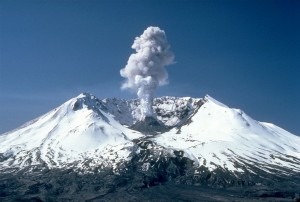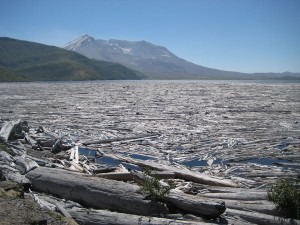
Alan Hovhaness
His style of music seems very much tied in with atmosphere – one critic summarized it as ‘hushed, reverential, mystical…’ and so we hear that in the opening of this remarkable work. Hovhaness’ Symphony No. 50 was written in 1982 as a commission from the publisher C.F. Peters. It is in homage to the volcano Mt. Saint Helens, which suffered a cataclysmic eruption on 18 May 1980.

Mt. Saint Helens the day before the eruption
The first movement, Andante, sets up the mystical and hushed view of the Mt. Saint Helens and the surrounding Cascade Mountains.
Hovhaness: Symphony No. 50, Op. 360, “Mount St. Helens”: I. Andante (Seattle Symphony Orchestra; Gerard Schwarz, cond.)
In the second movement, Spirit Lake (Allegro), we start to hear some of the Asian influences often found in Hovhaness’ music. The strings seem to be following the model of pizzicato from the music of Sibelius, while the woodwinds pluck lonely melodies from the air.
Hovhaness: Symphony No. 50, Op. 360, “Mount St. Helens”: II. Spirit Lake (Allegro) (Seattle Symphony Orchestra; Gerard Schwarz, cond.)

Mt. Saint Helens in 1982
The last movement begins with momentous chords, preparing us for something to come. And come it does at 1:48, with a rolling shock that builds and builds. We hear the thunder and lighting, the pyroclastic flows, and the shockwaves of earthquakes that shook the earth. Our melodies turn very pentatonic, driving over an incessant roar from the timpani and gong. We end with a triumphant statement, still over that roaring timpani, however.

Spirit Lake, the abbreviated Mt. Saint Helens behind, filled with dead trees from the eruption (Stephan Schulz)
All in all, it’s an extraordinary work commemorating the worst volcano on the American continent. All of man’s works stand as nothing when nature in the form of a volcano can destroy it all in a flash and boom.
